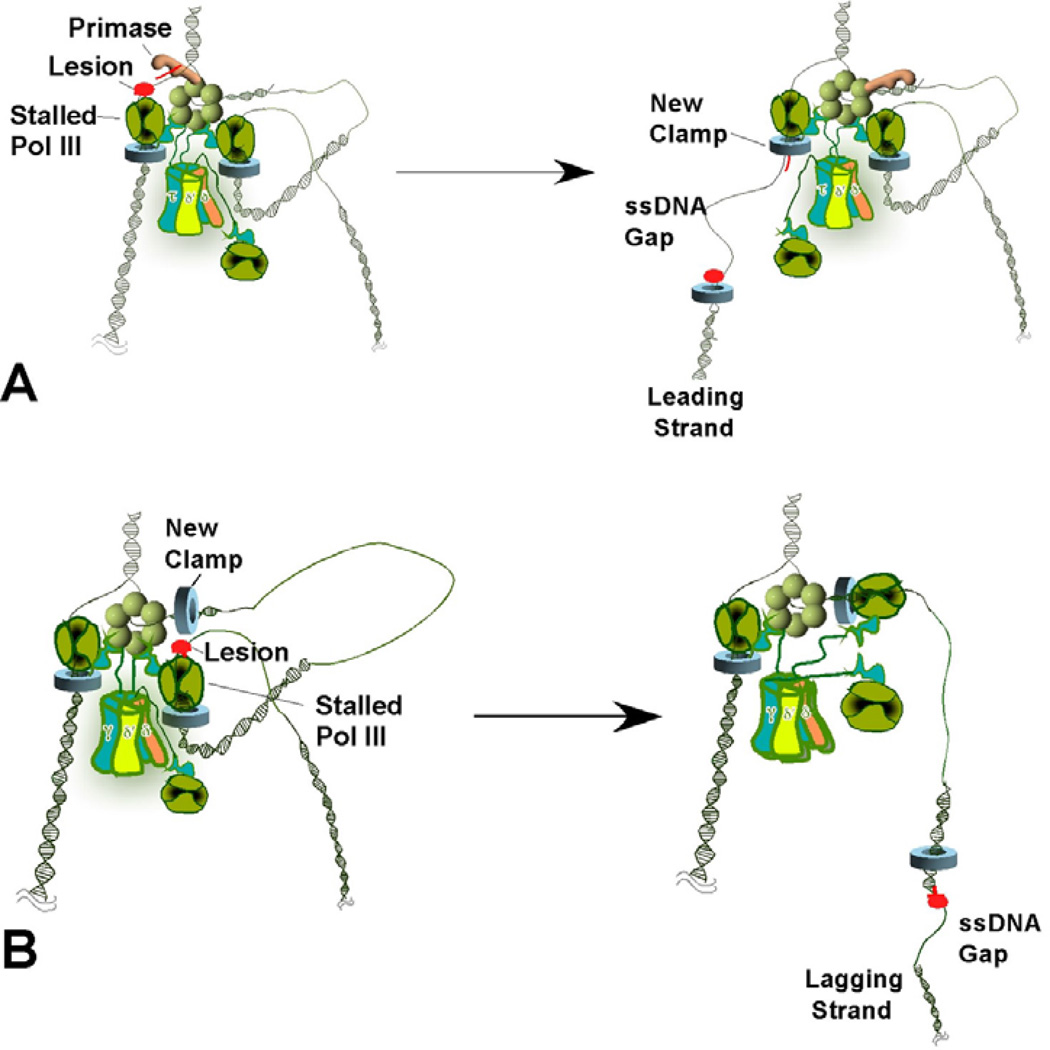Figure 4.
Lesion skipping model of ssDNA generation during DNA damage. (A) Leading strand lesion. The leading strand polymerase stalls upon encountering a lesion (left). The helicase recruits primase to reinitiate leading strand synthesis ahead of the lesion, leaving a single-strand gap (right). If stalling causes the replication fork to collapse, additional factors (e.g., PriA or PriC) are required to reload the helicase at the collapsed fork. (B) Lagging strand lesion. Upon encountering a lesion on the lagging strand template (Left), leading strand synthesis continues and the stalled lagging strand polymerase recycles to a new primer/template junction, leaving a single-strand gap with a template lesion (right).

